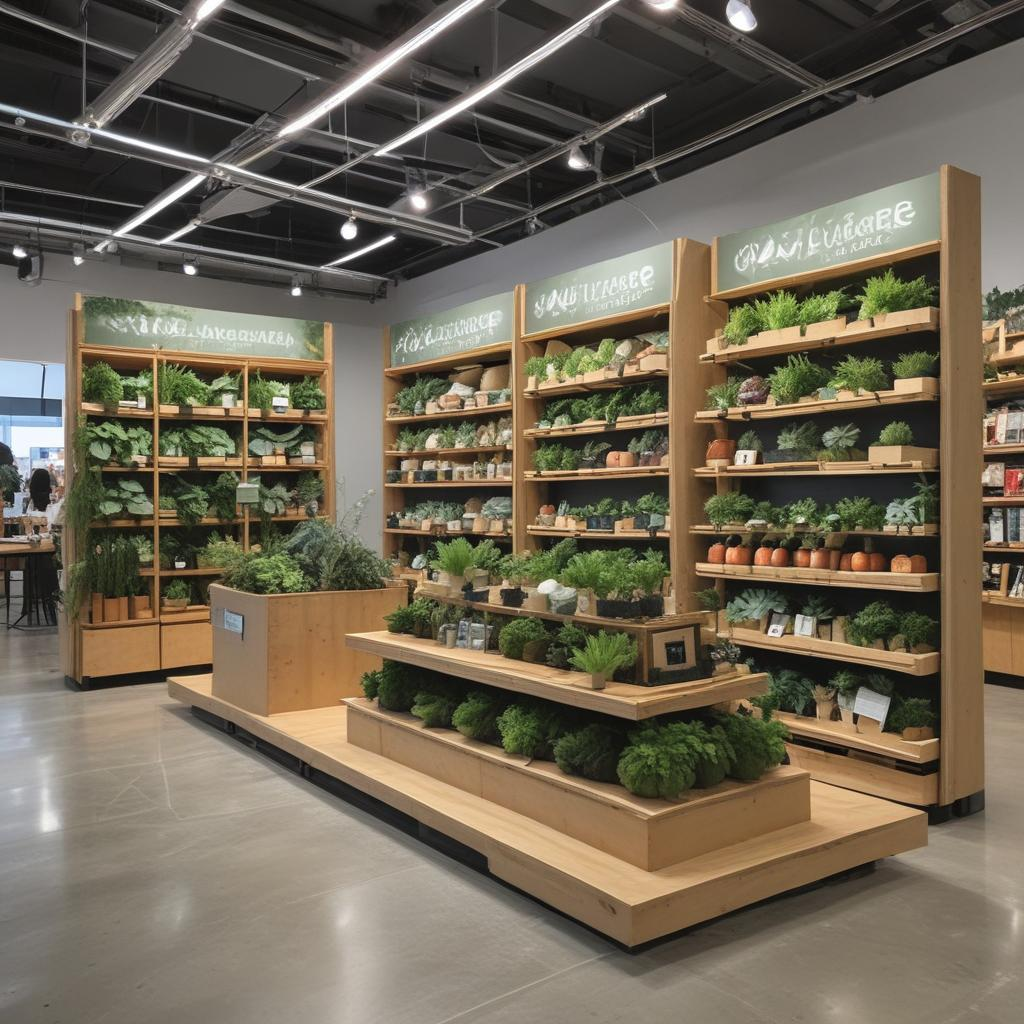Imagine walking into a small, bustling coffee shop tucked away in the corner of a busy urban street. The aroma of freshly brewed coffee fills the air, and the decor features an array of beautifully crafted, sustainable elements. Most notable are the display shelves, crafted from reclaimed wood and adorned with lush green plants, subtly promoting both the shop’s products and its commitment to environmental consciousness. This coffee shop has become a community favorite not just for its robust coffee, but also for its dedication to sustainability, especially visible in its use of eco-friendly display solutions. This story isn’t just about aesthetic appeal; it’s a testament to the power of sustainable practices in enhancing customer experience and brand loyalty.

Retailers across the globe are increasingly recognizing the importance of sustainability in enhancing their brand image and customer base. The use of eco-friendly display solutions is more than a trend; it’s a significant shift in the retail industry that aligns business practices with the growing consumer demand for environmental responsibility. Sustainable displays are not only an ethical choice but are also cost-effective in the long run.
Eco-friendly displays come in various forms and materials, each offering unique benefits while minimizing environmental impact. For instance, retailers are turning to materials such as bamboo, recycled plastics, and reclaimed wood to construct their display units. Bamboo, known for its rapid growth and durability, makes for an excellent renewable resource. Reclaimed wood not only reduces the demand for new timber but also adds a rustic, appealing element to store layouts. Recycled plastics meanwhile help reduce landfill waste, repurposing single-use plastics into durable display solutions.
In addition to material choice, sustainable display practices include modularity and flexibility in design. Modular displays can be reconfigured and adapted to different settings and products, significantly reducing the need for new materials. This flexibility allows retailers to refresh their display setups without additional resource expenditure, effectively reducing their environmental footprint.
Lighting also plays a crucial role in sustainable displays. LED lighting is a popular choice among eco-conscious retailers because of its energy efficiency and long lifespan. Incorporating LED lights into display units not only cuts down on energy consumption but also enhances product presentation through better illumination. Digital displays, powered by sustainable energy sources, can also be an effective alternative to traditional signage, reducing waste associated with printing and materials.
Educational marketing through eco-friendly displays is another effective strategy that retailers are employing. By informing customers about the sustainability of the products and the displays themselves, retailers can enhance consumer awareness and encourage eco-conscious purchasing decisions. This approach not only boosts sales but also fosters a positive brand image and customer loyalty.
In conclusion, the shift towards sustainable and eco-friendly display solutions in the retail industry is both necessary and beneficial. It mirrors a broader movement towards environmental stewardship while offering retailers the opportunity to innovate and connect with environmentally conscious consumers. As displayed by our opening anecdote about the coffee shop, integrating sustainability into every facet of a retail environment extends beyond mere business benefits; it contributes to a wider cultural shift towards greater ecological responsibility, ensuring a healthier planet for future generations.


.jpg)
.png)
.png)


0 Comments